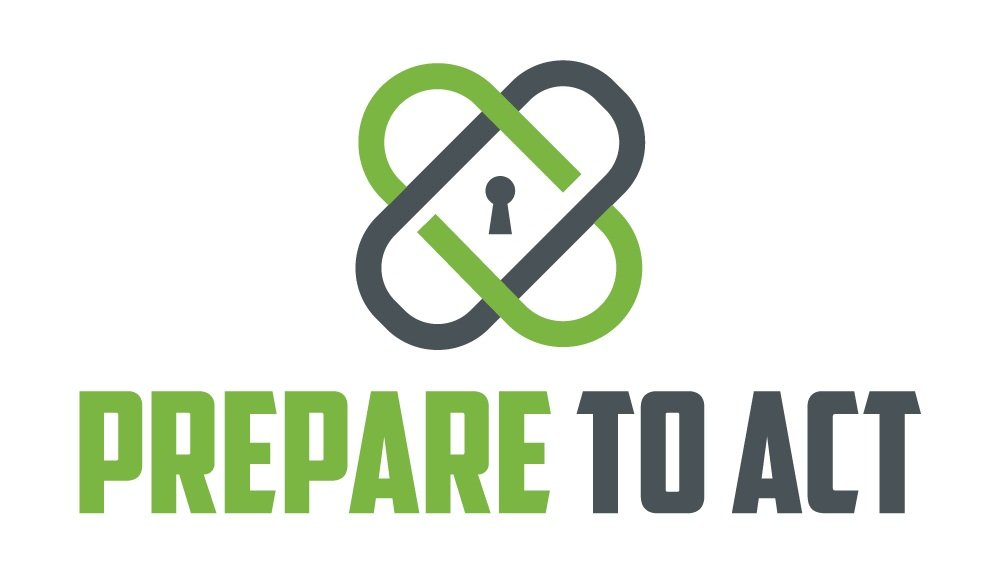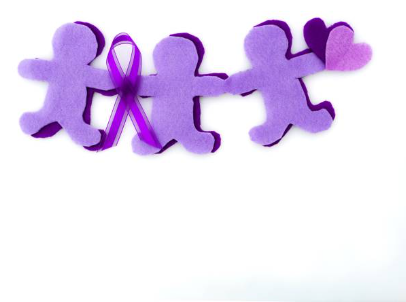Silent Struggles: Navigating Life After Emotional Abuse
Understanding Traumatic Brain Injuries and the Road to Healing
Understanding Traumatic Brain Injuries and the Road to Healing
Emotional abuse, characterized by non-physical behaviors aimed at controlling and intimidating, silently infects intimate relationships, leaving scars that go far beyond the end of the relationship. In the United States, an estimated one in three women and one in four men experience some form of intimate partner violence in their lifetimes, according to the Centers for Disease Control and Prevention (CDC). This staggering statistic highlights the prevalence of emotional abuse, which ranges from subtle manipulation to overt control.
Leaving an emotionally abusive relationship is an intense journey, impacting both physical and mental well-being. Survivors face a silent struggle of self-doubt and confusion, hidden beneath the surface. Shedding light on life after emotional abuse is essential to understanding and offering the support survivors need to truly heal.
Types of Emotional Abuse
Understanding different types of emotional abuse helps recognize unhealthy relationship behaviors:
Gaslighting: Manipulating someone to doubt their thoughts, feelings, or reality.
Coercion: Using pressure or threats to control actions.
Stonewalling: Refusing to communicate or discuss issues, leaving one feeling ignored and isolated.
Love Bombing: Overwhelming affection intended to control.
Each type of abuse can deeply affect a person’s self-worth, slowly eroding their self-esteem. Recognizing these behaviors is the first step to taking back control.
The Invisible Scars: Traumatic Brain Injuries (TBIs) in Emotional Abuse
When we talk about the aftermath of emotional abuse, we often think about emotional scars. But a lesser-known consequence is traumatic brain injuries (TBIs), which occur when an abuser targets vulnerable areas like the head, face, or neck. Unlike visible bruises, TBIs remain hidden, affecting the survivor’s cognitive and emotional functions long-term.
Survivor Insight
Understanding the unseen damage, like TBIs, adds another layer of empathy for survivors. It underscores the calculated and damaging nature of abuse and the resilience it takes to heal from both visible and invisible wounds.
Silent Struggles: The Reality of Flashbacks
The journey of healing often includes recurring memories, or flashbacks, that remind survivors of their past trauma. Everyday triggers—a song, a familiar setting—can bring back intense emotional responses. While distressing, survivors can reframe these flashbacks as signals of past experiences, learning to manage them as protective cues that remind them to stay safe and set boundaries.
Embracing Flashbacks as Allies
Instead of viewing flashbacks solely as painful memories, survivors can see them as tools that empower them to avoid future toxic relationships. It’s a shift from torment to self-preservation, transforming flashbacks into a powerful form of resilience.
Healing Impacts on Future Relationships
The aftermath of emotional abuse often affects how survivors approach new relationships:
Rebuilding Self-Esteem: Emotional abuse erodes self-worth, requiring survivors to practice self-reflection and compassion as they rediscover their value.
Trust and Vulnerability: Entering new relationships involves fears rooted in past abuse. Survivors learn to differentiate between caution and fear, strengthening their sense of self.
Growth and Transformation
This healing journey, though difficult, leads to powerful growth. Each step in rebuilding trust and confidence empowers survivors to form meaningful, healthy connections.
Seeking Support & Resources:
Finding help and support after leaving an abusive relationship is crucial for healing. Let's talk about seeking support and the challenges survivors might face.
Personal Experiences: Imagine you've decided to leave an abusive partner – a brave but difficult choice. After making this decision, seeking support becomes a lifeline. Finding resources like hotlines, shelters, or counseling was like navigating through a maze of uncertainty.
Addressing the Scarcity: One surprising challenge survivors often encounter is the scarcity of literature addressing life after leaving an emotionally abusive relationship. While there's valuable information about identifying abuse and leaving, there's a noticeable gap when it comes to the aftermath.
Think about it like this: You've taken the first step by leaving, but what's next? Where do you find guidance on rebuilding your life, handling emotional struggles, or navigating new relationships? The lack of literature on these crucial aspects can leave survivors feeling lost, as if there's a missing manual for life after abuse.
This scarcity emphasizes the need for more resources and discussion around the unique challenges survivors face post-abuse. By sharing our experiences and highlighting these gaps, we contribute to breaking the silence and creating a roadmap for those seeking support after leaving an emotionally abusive relationship.
Here Is A List Of Places & Websites That Can Help!
Survivors often encounter a lack of resources addressing life after abuse. Here’s a list of valuable resources for support:
National Domestic Violence Hotline (NDVH):
Website: The Hotline
Phone: 1-800-799-SAFE (7233)
RAINN (Rape, Abuse & Incest National Network):
Website: RAINN
National Sexual Assault Hotline: 1-800-656-HOPE (4673)
Love is Respect:
Website: Love is Respect
Phone: 1-866-331-9474
Text "LOVEIS" to 22522
National Resource Center on Domestic Violence (NRCDV):
Website: NRCDV
DomesticShelters.org:
Website: DomesticShelters
Psychology Today - Find a Therapist:
Website: Psychology Today Therapist Directory
The Unseen Consequence:
When we talk about the aftermath of emotional abuse, we often think about the emotional and psychological scars, but there's an unseen consequence that hides beneath the surface – traumatic brain injuries (TBIs). These injuries, resulting from intentional harm by abusers, serve as a chilling hidden consequence of emotional abuse.
Traumatic brain injuries occur when there's a forceful impact to the head, causing harm to the brain. In the context of emotional abuse, abusers deliberately target vulnerable areas like the head, face, or neck. This intentional focus not only inflicts physical harm but also cleverly conceals visible signs of abuse. Unlike bruises or marks, the effects of TBIs are hidden from the naked eye, adding another layer to the covert nature of emotional abuse.
Consider this: an abuser, during an episode of abuse, may specifically aim to cause harm to the head, knowing that the resulting injuries won't be immediately apparent. This deliberate strategy allows them to maintain control and avoid external scrutiny. The survivor, in the midst of emotional turmoil, may not even be aware of the physical harm being inflicted upon them.
The intentional targeting of vulnerable areas underscores the calculated and insidious nature of emotional abuse. It not only leaves lasting emotional scars but also inflicts hidden injuries that can have profound and long-term consequences. By recognizing this hidden aspect, we shed light on the multifaceted impact of emotional abuse, emphasizing the importance of addressing both the seen and unseen consequences for the well-being of survivors.
Flashbacks:
The journey of healing from emotional abuse often involves a haunting companion – continuous flashbacks. These recurring memories, like unwelcome visitors, persist in survivors' day-to-day lives, serving as reminders of the past emotional turmoil they endured.
Imagine leaving an abusive relationship, hoping for relief, only to be confronted with vivid flashbacks triggered by seemingly ordinary things – colors, songs, or locations. In my own experience, I found myself entangled in a web of memories, unable to escape the haunting echoes of arguments and moments spent with my abuser.
These flashbacks, initially distressing, can be reframed as protective signals. Rather than viewing them as mere reminders of the past, survivors can recognize them as internal alarms signaling the anxious state the abuser induced. Accepting flashbacks as guardians of emotional well-being allows survivors to transform them from tormentors to allies.
Reframing involves acknowledging the protective role these flashbacks play. They serve as cues, cautioning against potential harm and preventing a return to abusive patterns. It's a challenging but empowering shift – turning what once caused distress into a tool for self-preservation.
By understanding the role of flashbacks in this new light, survivors gain agency over their emotional well-being. They become active participants in their healing journey, using these signals to reinforce boundaries and prevent future abuse. In embracing this perspective, survivors can reclaim control over their narrative, breaking free from the chains of the past and stepping into a future built on strength and resilience.
Healing Impacts on Future Relationships:
The aftermath of emotional abuse can cast a long shadow on survivors' journeys toward rebuilding self-esteem and navigating new relationships. Let's delve into the challenges survivors encounter and the transformative growth that accompanies the healing process.
Rebuilding Self-Esteem: One of the significant challenges survivors face is the gradual process of rebuilding self-esteem. Emotional abuse can erode one's sense of self-worth, leaving survivors grappling with doubts and insecurities. The journey toward self-love and acceptance is often marked by moments of self-reflection, self-compassion, and the gradual realization of personal strengths.
Exploring New Relationships: As survivors consider entering new relationships, they confront fears deeply rooted in their past experiences. Intimacy becomes a terrain laden with anxieties – fears of vulnerability, rejection, or even moving on entirely. The scars of emotional abuse may echo in the survivor's mind, questioning whether it's safe to trust again.
Empowering Growth: While these challenges are undeniably daunting, they also pave the way for empowering growth. The healing journey becomes a powerful catalyst for self-discovery and resilience. Survivors, in rebuilding their self-esteem, gain insights into their own strengths and learn to appreciate the unique qualities that make them who they are.
Fears of Intimacy and Rejection: The fear of intimacy and rejection, though formidable, transforms into a source of newfound power. Survivors learn to differentiate between healthy caution and paralyzing fear, allowing them to approach relationships with a balanced perspective. Navigating these fears becomes a testament to the inner strength cultivated through the healing process.
Moving On and Embracing New Beginnings: Moving on from past traumas and embracing new beginnings is a courageous step. It signifies the survivor's resilience and commitment to creating a future free from the shackles of abuse. Each new relationship, approached with mindfulness and self-awareness, becomes an opportunity for growth, connection, and the exploration of genuine, respectful intimacy.
In essence, the healing impacts on future relationships are profound. The challenges encountered are not roadblocks but stepping stones toward a future characterized by empowered choices, healthy connections, and the continuous blossoming of self-love.
Impact on Relationships with Friends & Family:
The aftermath of emotional abuse extends beyond the individual, influencing relationships with friends and family. Let's explore the challenges survivors face in silencing the abuser's voice and the transformative process of self-reflection on needs and boundaries.
Eliminating the Abuser's Voice: One of the most formidable challenges for survivors is silencing the persistent voice of the abuser in their head. This voice, laden with blame and responsibility, echoes long after leaving the abusive relationship. It becomes a constant companion, influencing self-perception and distorting the survivor's understanding of their own needs and boundaries.
Self-Reflection on Needs and Boundaries: Amidst the struggle to eliminate the abuser's voice, survivors embark on a journey of self-reflection. This involves not only identifying the toxic narratives implanted by the abuser but also understanding one's authentic needs and boundaries. It's a process of unraveling the complexities woven into the fabric of interpersonal relationships.
Evaluating Characteristics for Future Relationships: As survivors engage in self-reflection, they gain clarity on the characteristics essential for healthy relationships. This introspection becomes a guiding light, steering survivors away from replicating patterns of abuse in their connections with friends and family. It's about setting boundaries, recognizing red flags, and building relationships based on mutual respect and understanding.
Recognizing Unhealthy Relationships: The journey of healing prompts survivors to recognize unhealthy relationships that mirror the dynamics of their past abuse. It involves discerning between supportive connections and those that perpetuate harmful patterns. This discernment empowers survivors to nurture relationships that contribute positively to their well-being.
Navigating Loneliness and Empowering Independence: At times, the process of silencing the abuser's voice may evoke feelings of loneliness and fear. However, it also serves as an opportunity for empowerment, independence, and self-confidence. The survivor learns to differentiate between healthy solitude and the isolation imposed by toxic relationships.
In conclusion, the impact on relationships with friends and family post-emotional abuse is multifaceted. It involves the challenging task of quieting the abuser's voice, coupled with a transformative journey of self-reflection. By evaluating needs and boundaries, survivors pave the way for healthier connections, fostering a future marked by genuine, supportive relationships.
Navigating Post-Abuse Challenges with Resilience and Hope
In the intricate tapestry of post-abuse recovery, survivors encounter common challenges that test their resilience and inner strength. The journey of silencing the abuser's voice, engaging in profound self-reflection, and redefining relationships with friends and family is not without its hurdles. However, amidst the challenges lie practical solutions that illuminate the path to healing and transformation.
Embracing the Power of Self-Reflection: The process of eliminating the abuser's voice necessitates a journey into self-reflection. Survivors can find solace and empowerment in recognizing their authentic needs and boundaries. This introspection becomes a compass guiding them towards relationships grounded in respect, understanding, and genuine connection.
Fostering Healthy Connections: Identifying and acknowledging unhealthy relationships is a pivotal step. By recognizing patterns mirroring past abuse, survivors pave the way for healthier connections. Setting firm boundaries and being attuned to red flags become shields against perpetuating harmful dynamics, fostering environments where supportive relationships can flourish.
Empowering Independence and Confidence: Loneliness may cast its shadow, but it also serves as an opportunity for empowerment, independence, and newfound self-confidence. Survivors learn to differentiate between healthy solitude and the isolation imposed by toxic relationships. The process of silencing the abuser's voice becomes a transformative journey towards embracing one's own strength and resilience.
10 Ways To Face Your Fears! - A Prepare To Act Original Post.
As survivors navigate these challenges, they weave a narrative of triumph over adversity. Practical solutions emerge not as mere strategies but as tools for sculpting a future marked by genuine connections, self-love, and the profound resilience that defines their journey. In the face of post-abuse challenges, survivors stand resilient, anchored in the hope of a future liberated from the shadows of past traumas. Together, they forge a path towards healing, redefining relationships, and embracing a life where the echoes of abuse are replaced by the empowering whispers of self-discovery and growth.
A Poem On Domestic Violence
FAQs: Understanding Emotional Abuse and its Aftermath
How common are traumatic brain injuries in survivors of emotional abuse?
Traumatic brain injuries are prevalent among survivors, particularly when abusers intentionally target vulnerable areas.
What are some signs of emotional abuse that survivors might not immediately recognize?
Signs include coercion, gaslighting, stonewalling, and love bombing, often leading to internalization of the abuse.
How can survivors reframe flashbacks as protective signals for their well-being?
Acknowledge flashbacks as reminders of past anxiety, allowing them to prevent future abusive situations.
What challenges do survivors face when rebuilding self-esteem after emotional abuse?
Rebuilding self-esteem can be challenging due to cognitive dissonance, feelings of lost identity, and reduced confidence.
How does the fear of intimacy affect survivors when entering new relationships?
Survivors may experience valid fears but can also find newfound empowerment in recognizing and avoiding dangerous situations.
Can emotional abuse lead to post-traumatic stress disorder (PTSD)?
Yes, emotional abuse often results in PTSD, causing symptoms like nightmares, flashbacks, and hyperarousal.
What is the role of trust in forming healthy relationships after emotional abuse?
Learning to trust again is a valid fear, but it becomes a newfound power, allowing survivors to be selective and recognize healthy partners.
How can survivors navigate the impact of emotional abuse on relationships with friends and family?
The process involves self-reflection, recognizing unhealthy dynamics, and making decisions to protect oneself from toxic relationships.
What are the long-term effects of traumatic brain injuries resulting from emotional abuse?
TBIs can lead to ongoing cognitive, emotional, and behavioral struggles, affecting decision-making and relationship dynamics.
How can survivors contribute to creating a future free from emotional abuse?
By shedding light on their experiences, supporting each other, and raising awareness about the hidden consequences of emotional abuse.







